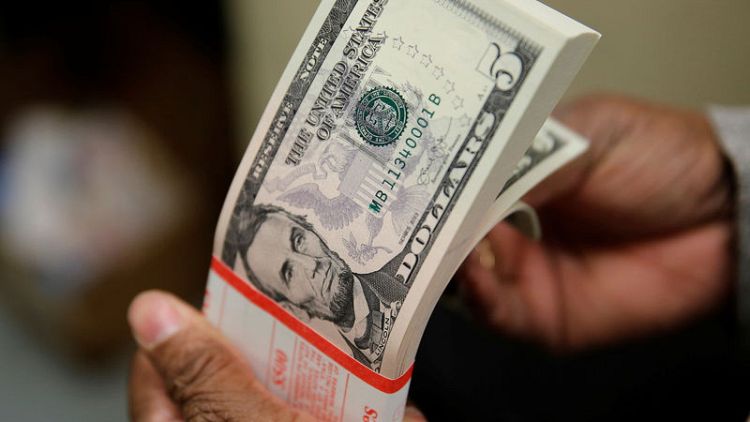LONDON (Reuters) - The U.S. Treasury bond yield curve inverted on Wednesday for the first time since 2007, in a sign of investor concern that the world's biggest economy could be heading for recession.
The inversion -- a situation where shorter-dated borrowing costs are higher than longer ones -- saw U.S. 2-year note yields rise above the 10-year bond yield.
The curve inverted to as much as minus 1.7 basis points by 1045 GMT .
Such an inversion, considered a classic recession signal, occurred last in June 2007 when the U.S. sub-prime mortgage crisis was gathering pace . The U.S. curve has inverted before every recession in the past 50 years, offering a false signal just once in that time.
"Historically the U.S. curve was always thought of as a recession signal and it remains to see if that's still the case. The world certainly seems a less safe place," said Tim Graf, chief macro strategist at State Street Global Advisors.
Weak economic data and inflation, global trade tensions and risks such as the consequences of Brexit have driven concern about world growth, fuelling market expectations of central bank rate cuts and sparking hefty falls in government bond yields.
The U.S. 30-year Treasury yield tumbled to a record low of 2.05% on Wednesday. In Germany, the 10-year bond yield fell to a record low of -0.64% after data showed the euro zone's powerhouse economy shrank in the second quarter.
"The yield curve inversion is a bad omen for the economy," said Arne Petimezas, an analyst at AFS in Amsterdam.
"Inversions in crucial segments of the yield curve have always heralded recessions. However, typically central banks ignore the warning signal. They often cut too little or too late."
Elsewhere, yield curves have been less accurate in predicting downturns but Germany's was at its flattest since 2008.
Britain's bond yield curve also inverted on Wednesday for the first time since the global financial crisis.
In March, the inversion of the U.S. yield curve hit 3-month T-bills for the first time in about 12 years when the yield on 10-year notes dropped below those for 3-month securities.
That metric reverted back and then inverted again in May. Over that period, the 2-/10-year curve did not invert.
Some have cast doubt on how accurate the yield curve remains as a recession predictor after a decade of multi-trillion dollar central bank money-printing stimulus.
Graf said the backdrop now was not a "perfect apples to apples comparison" to the last curve inversion episode, which happened just over a year before the collapse of Lehman Brothers sent the world economy into a tailspin.
"The supply-demand dynamics for safe assets are different and to some degree it explains why the curve inversion may last longer without portending recession, than during past episodes."
(Reporting by the London Markets Team, writing by Dhara Ranasinghe; ; editing by John Stonestreet)



